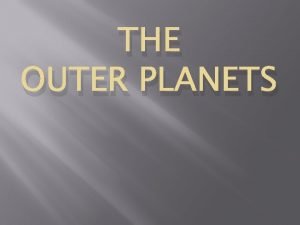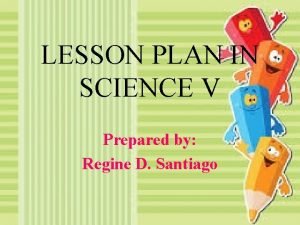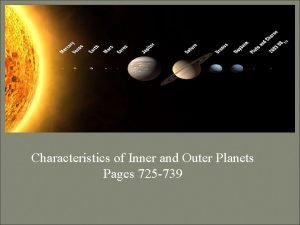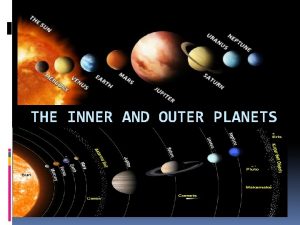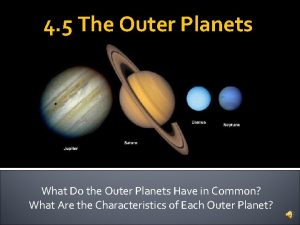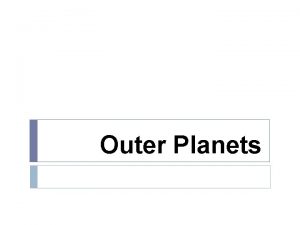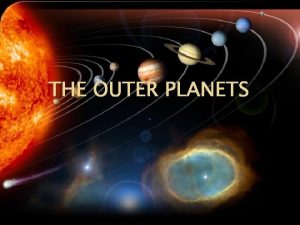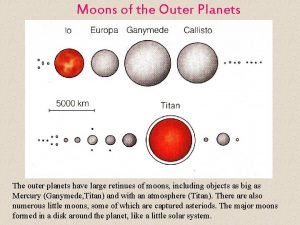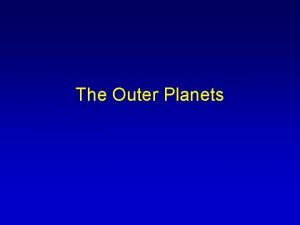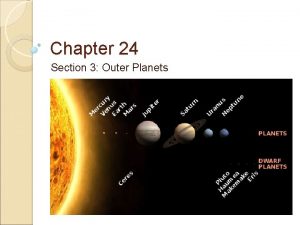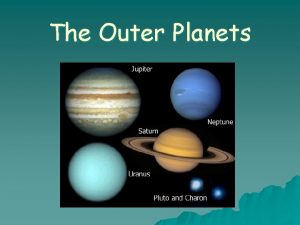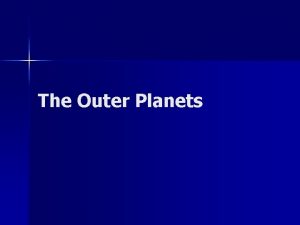Outer Planets Notes The Outer Planets Gas Planets












- Slides: 12

Outer Planets Notes

The Outer Planets • Gas Planets – “gas giants” or “Jovian planets” – Made mostly of gas & liquid hydrogen & helium, similar to the Sun! – Very large planets with strong gravity – All have many moons and planetary rings – Jupiter, Saturn, Uranus, Neptune

Order of the Solar System • • Sun Inner Planets Asteroid Belt Outer Planets – – Jupiter Saturn Uranus Neptune • Kuiper Belt – – – Asteroids Pluto Haumea Makemake Eris • Oort Cloud – Comets

Planetary Rings • Made of small particles of rock, ice, and dust, orbiting a planet in a flat disc shape.

6 th Planet - Jupiter • King of Planets!!! • Has at least 67 moons and planetary rings • Four largest moons are the Galilean moons: Io, Europa, Ganymede, Callisto

7 th Planet - Saturn • Famous ring system • 62 moons • Low density, could float on water • Frozen, slushy atmosphere • Largest moon is Titan (2 nd largest in SS), has it’s own atmosphere

8 th Planet - Uranus • Sometimes called an “ice giant” rather than “gas giant”, atmosphere contains lots of “ices” • The “sideways planet”, axis is tilted 98°, rotates top to bottom • 27 moons

9 th Planet - Neptune • Also an “ice giant” • Existence was determined mathematically before being seen thru a telescope! • Fastest winds in solar system

Kuiper Belt • Region beyond Neptune filled with SSSBs (Small Solar System Bodies) which are basically asteroids. – There are many different kinds with many confusing names of SSSBs: KBOs, TNOs, trojans, centaurs, planetoids, minor planets. . . don’t worry about it unless it is your project topic! • Kuiper Belt is very similar to Asteroid Belt, filled with leftovers from creation of solar system • Kuiper Belt also holds the dwarf planets Pluto, Haumea, Makemake, and Eris. May hold hundreds more

10 Planet - Pluto • Used to be a major planet • Odd orbit, sometimes is closer to Sun than Neptune • 5 moons • Largest moon Charon is half size of Pluto • Considered by some to be a double-planet with Charon

11 th – Haumea 12 th – Makemake 13 th – Eris • Haumea shaped like a football • Haumea and Makemake named after Polynesian mythic characters • Eris larger than Pluto • Hundreds of other objects in Solar System may be classified as dwarf planets

Oort Cloud • Large spherical cloud of icy objects such as comets • Existence is theory, has not been directly observed • Comets: made of rock, ice, and dust with a visible atmosphere or tail – Tails always point away from Sun, regardless of what direction comet is traveling
 What are the four outer planets called
What are the four outer planets called What separates the inner planets and outer planets
What separates the inner planets and outer planets What separates the inner planets and outer planets
What separates the inner planets and outer planets Inner planets and outer planets
Inner planets and outer planets Are jovian planets more dense than terrestrial
Are jovian planets more dense than terrestrial Outer planets
Outer planets Characteristic of mars
Characteristic of mars The two outer jovian planets appear bluish in color because
The two outer jovian planets appear bluish in color because Inner outer planets venn diagram
Inner outer planets venn diagram What are the characteristics of inner planets
What are the characteristics of inner planets What separates the inner and outer planets
What separates the inner and outer planets My very excited mother just served us nachos
My very excited mother just served us nachos What do the first four outer planets have in common
What do the first four outer planets have in common





